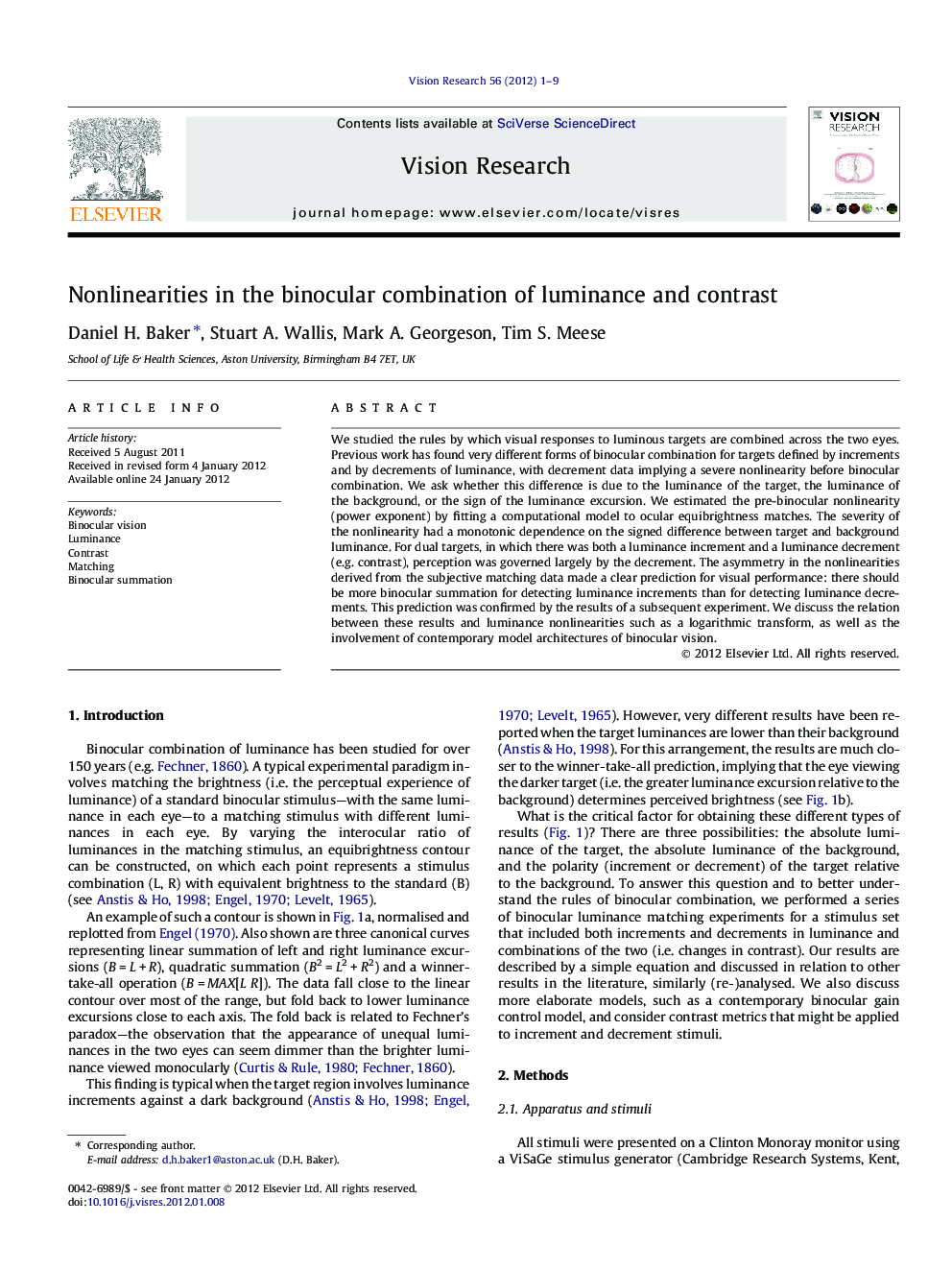| Article ID | Journal | Published Year | Pages | File Type |
|---|---|---|---|---|
| 4034051 | Vision Research | 2012 | 9 Pages |
We studied the rules by which visual responses to luminous targets are combined across the two eyes. Previous work has found very different forms of binocular combination for targets defined by increments and by decrements of luminance, with decrement data implying a severe nonlinearity before binocular combination. We ask whether this difference is due to the luminance of the target, the luminance of the background, or the sign of the luminance excursion. We estimated the pre-binocular nonlinearity (power exponent) by fitting a computational model to ocular equibrightness matches. The severity of the nonlinearity had a monotonic dependence on the signed difference between target and background luminance. For dual targets, in which there was both a luminance increment and a luminance decrement (e.g. contrast), perception was governed largely by the decrement. The asymmetry in the nonlinearities derived from the subjective matching data made a clear prediction for visual performance: there should be more binocular summation for detecting luminance increments than for detecting luminance decrements. This prediction was confirmed by the results of a subsequent experiment. We discuss the relation between these results and luminance nonlinearities such as a logarithmic transform, as well as the involvement of contemporary model architectures of binocular vision.
► Investigates how both luminance and contrast are combined across the eyes. ► Measure equibrightness curves using matching paradigm. ► Implied nonlinearity depends on luminance difference (target – background). ► Consistent with a reanalysis of results from the literature. ► Stronger binocular summation for luminance increments than for luminance decrements.
